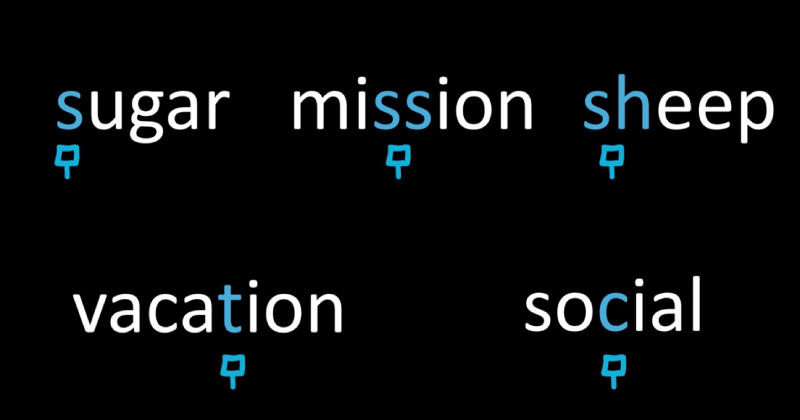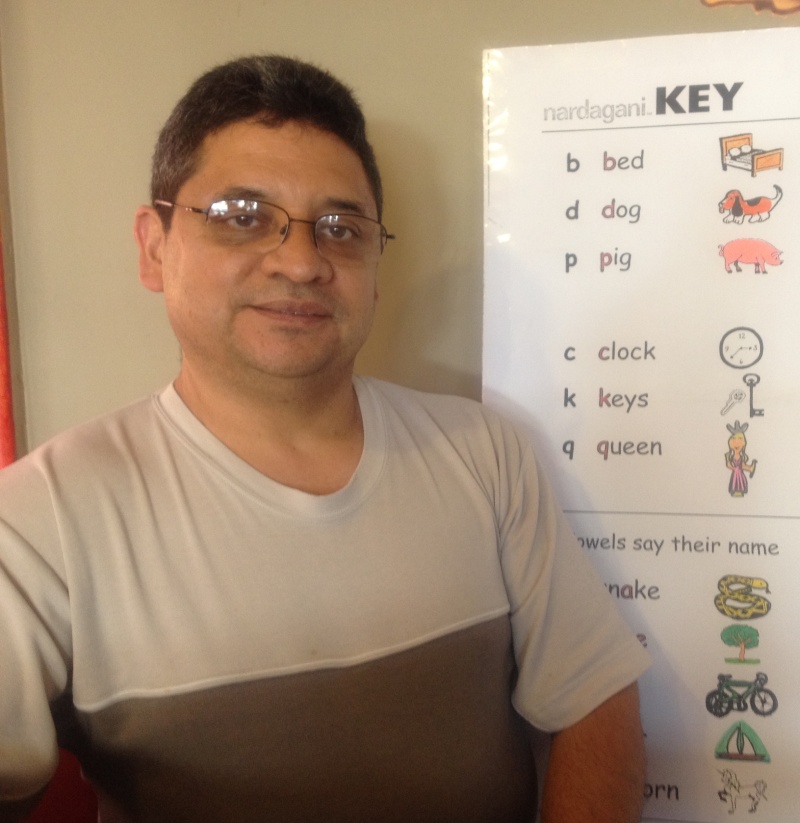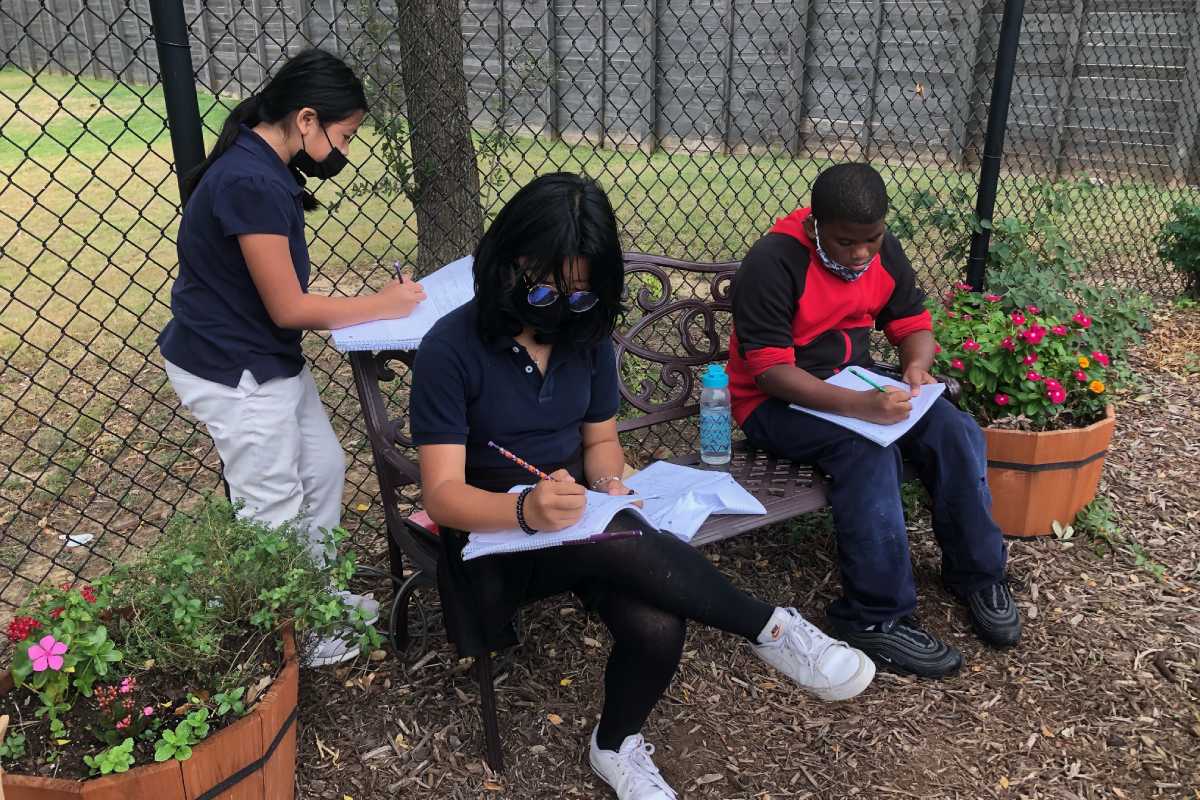Learning to Read English Using Simple Symbols

As 11-year-old Brianna walked down the hallway of Wood River Middle School in Hailey, Idaho, she read every word on every sign. As she walked into her classroom, Brianna continued reading the posters on the walls. When she got in the car to go home, Brianna opened the glove box looking for something to read. No one would have believed that a few weeks earlier Brianna disliked reading due to years of frustration of struggles with literacy.
“Now she is reading everything!” said her excited mother. “All she wants to do is read! It’s so wonderful!”
Brianna comes from a bilingual household of Spanish and English. Brianna’s mother speaks English fairly well, though her father does not.
Even more amazing was that Brianna’s love for reading blossomed in three, hour-long lessons using a unique reading system.
Narda Pitkethly lived in Japan in the mid-1980s. She learned to read Japanese using Hiragana, a reading system the Japanese created by using simple symbols under their complicated written language. After returning to the United States, Narda’s daughter was a challenged reader. To help her daughter, and other challenged readers, Narda modified and revised the Japanese way of teaching, thus developing the Nardagani Reading Program for English. The program was approved by the Idaho State Department of Education in 2012 continues to gain traction, teaching thousands of students to read. Narda is committed to increasing literacy worldwide, teaching people of all ages, nationalities, and backgrounds to read.
The Nardagani method uses 12 simple symbols to pronounce the English alphabet. These symbols are like training wheels on a bicycle. Students learn and gain confidence in sounding out words with the help of these symbols. As students learn to sound out words, they gain an ever-growing number of words they can easily pronounce and recognize on sight. Today, the Nardagani Reading Program is used in 44 countries around the world with more educators, parents, and struggling learners making use of these strategies and systems to help improve reading.
There are 26 letters in the English alphabet. Twelve letters make only one sound, 14 letters make multiple sounds, and 17 letters are sometimes silent. Using the 12 symbols placed under letters to help “sound them out,” the Nardagani program eliminates the guesswork involved in reading English. Once students learn the meaning of each symbol, they can see how the letters and words should be pronounced. By the end of the program, readers are able to read even when the symbols are removed.
While Nardagani has numerous reports of the success of the program, the Nardagani system is becoming more data-based through school program testing. For that reason, Nardagani has decided to partner with a school in order to perform an academic study on the effectiveness of the program in a school setting. For the 2020 school year the Nardagani Reading Program is being taught at Buhl Middle School in Buhl, Idaho, led by Sandra Bosteder MHE, MPEAA. Bosteder will also be conducting a companion academic study, summarizing the results of teaching Nardagani.
“There are 126 sixth grade students in the pilot program/research study. They were pre-tested with the TOSWRF (Test of Silent Word Reading Fluency) standardized test the first week of school. By late October they will have completed the Nardagani course and be ready for post-testing,” Narda Pitkethly explains. The sixth grade teacher who volunteered for the study was willing and enthusiastic to try our program. As a long time educator, she recognized the value in how quickly students can grasp reading with our symbols.

While Bosteder’s primary motivation in using Nardagani is to increase reading skills, the Nardagani team is optimistic regarding the conclusions of the Buhl study. Bosteder recognizes the emotional and mental disconnect felt by students when state and national education standards seem unattainable for vast numbers of students. Wanting to eliminate that disconnect, Bosteder believes the Nardagani Program is foundational to bringing reading skills to school districts with low reading performance.
For a student like Brianna, who wants to learn to read with Nardagani, the first step is to pick a designated tutor who has taken the three-hour interactive teacher training, which is part of the comprehensive online Nardagani program. The tutor can be a parent, family member, friend or a teacher.
Nancy Brandt hired a tutor for her grandson who was entering second grade and could not read. After her grandson used Nardagani, Nancy stated, “I simply can’t say enough about this program and the symbols. He is now reading at a third-grade level and his first-grade teachers simply can’t believe it! With the help of his tutor, I saw an improvement in his reading after three lessons. All school systems need to hook into this—it’s a fabulous program.”
Narda recalls one of her first students. “It started with a call from a desperate grandmother, Catherine Hayward, who told me, ‘My grandson is 12 years old, autistic and cannot read.’ His teachers say he may never learn to read. It would be a miracle if you could teach him to read.’”
Narda had confidence that Nardagani could work for Catherine Hayward’s grandson, Sven Dickey.
When Narda met Sven – then in the fifth grade, he could not read even simple words like “at,” “me” and “it.” After five lessons of Nardagani, Sven was reading five-letter words. One lesson later, he read his first full book, about a yellow dog named “Biscuit.” He followed that up with a book about going on a safari – a feat that made him grin from ear to ear.
“I do like reading,” said Sven. “It used to be hard to read. I would go someplace and see a sign and not know what it meant. But now I like reading stories by myself.” Now 15, Sven reads for pleasure as enthusiastically as he enjoys swimming and skiing.
One of Sven’s teachers commented, “It’s a miracle how quickly this program worked for him. It was like a key unlocking something within him so he could figure out how to read.”
Sven’s father, Sam Dickey, says his son is reading words Sam never thought he would ever be able to read. “He’s definitely come a long way – it blows my mind to think how far he’s come,” Sam said. “Even his teachers recognize how without Nardagani, he might still be at square one. I’d say if something like Nardagani can help Sven, it can help everyone.”
Sven says, “I once thought reading was impossible. Now I know all things are possible.”
Adults can learn to read English without a tutor. Narda has devised an online program to guide people through learning to read. Native English speakers and ESL (English as a Second Language) students have increased their reading skills. The Nardagani Reading program eliminates the need to learn the complicated rules for reading English.
The Nardagani program also teaches pronunciation. ESL students learn for the first time about the many sounds of the letters and vowels in English. The symbols guide students through the different sounds of the consonants and vowels. When learning a new language, one must learn the sounds of the new language. Often the new sounds have never been experienced before in one’s mouth.
Fabio Aguirre, a store clerk, used to hide in another store aisle when he saw his boss coming. “I wanted to greet him with the words, ‘Hello, Chip!’ But I was afraid I would say, ‘Hello, Sheep,’ instead (as Chip would be pronounced in Spanish). I couldn’t pronounce his name correctly.”
Fabio doesn’t need to run and hide, anymore. The Peruvian native has learned to pronounce the English words of his adopted country, thanks to Nardagani. “Before Nardagani, I had not found this kind of help with my pronunciation,” said Fabio. “It is my dream come true.”
Fabio, who grew up in Lima, came to the United States 14 years ago at the suggestion of a relative, who had moved to the United States to work for Sun Valley Resort. A hard working, eager to please young man, Fabio quickly landed a job behind the meat counter at Atkinsons Market.
Fabio was frustrated every time he tried to communicate with the customers. Unable to speak a word of English when he arrived, he had taken every English class he could find. But he still was unable to pronounce English so his new American friends could understand him.
“I could see the confusion on their faces, they couldn’t understand me because of my pronunciation. They’d say, What? Please repeat. My confidence was terrible because I didn’t feel I could express my thoughts,” he recalled.

Fabio felt like he had nothing to lose when he met Narda, and she offered to teach him English using the system she had developed. “I remember her saying ‘I’ve got just the reading program for you,’” he recalled. “Many of my friends had told me that I was too old to learn English well. But I believe that you are never too old to learn when you truly want to learn something.”
Soon, Fabio was using the Nardagani pronunciation tool to learn what his lips, teeth and tongue should be like for each of the sounds in the English language. He learned to put his tongue between his teeth to pronounce the “th” sound, which the Spanish language does not have. He learned to pronounce “V” the proper way, rather than forming the letter “B,” as he had been doing. He learned to say “ch” with a hard sound and “sh” with a softer sound. And he learned how to differentiate between the “s” and “z” sounds when pronouncing those letters.
“It was amazing for me to finally find this knowledge. This system has changed my life,” he said, waving his hands excitedly through the air. In addition to learning how to pronounce English words so that his customers and friends could understand him, Fabio found he could read signs that had previously seemed like a jumble of letters. He was able to begin writing customers’ orders. He began reading at night, just for fun.
Fabio no longer fears trying to communicate with anyone in English. He feels confident and respected. “I am very grateful to Narda for expanding my work skills. Next time I see Chip, I will be so happy to say, ‘Chip how are you doing?’” he said. “Narda’s system of language gave me more strength, more power. Emotional—that’s how I’m feeling now. I am going to be happy the rest of my life because I finally get it!”
“Patricia worked at a local Mexican restaurant,” Narda recounts. “She could not speak English, so I ordered my lunch by pointing to the item on the menu. Patricia was very kind and I wanted to help her. I knew if she learned to speak English, it would improve her life. I brought in a Spanish speaking friend who asked her if she would be interested in learning English the Nardagani way? She said, “I want to learn English.”
Patricia began Nardagani classes a few days later. After fifteen lessons, Patricia felt confident in reading, writing and speaking English. Within six months, Patricia felt so positive about her English skills that she was able to open her own restaurant in Hailey, Idaho.
Being a challenged reader can be embarrassing. Many people choose the option of our English-speaking course online for ESL classes. Private classes are in your home, because of our Nardagani online course.
Narda recounts meeting Robert… A man in his 70s, whom I met at a local business was intrigued by the Nardagani symbols and asked if we could meet. The next day Robert came to my office. He asked if he could shut the door. When we were in complete privacy, he sat down across from me. He had two magazines with him. First, he showed me the magazine with Fortune written across the front. Robert said, “See here on page 86, I’m a successful business man—right here in this magazine!” Then he showed me Entrepreneur Magazine and said, “I’m in this magazine too. You can see I’m a very smart man.”
I nodded my head and acknowledged him. Then he leaned in close and said in a whisper, “I can’t read.”

I was not surprised. I have taught people of all ages and backgrounds who struggled with reading. I said, “Let’s fix this situation. I’ll teach you to read!” And I did. Robert learned to read in his 70s!
Anthony (age 14) shares in a video testimonial on the Nardagani website. Anthony says, “Before this program, maybe a week ago, I was worried about starting school. I would go into school and I’d be thinking that the teacher is going to call on me to read in this book, and I’m going to get laughed at because I would mess up every word or switch up o’s and a’s. But ever since I started this program, everything is easier now. When I see a bigger word now, I use the symbols to decode it and I have confidence and everything is easier. I understand what the sounds of all these vowels make. Now I know the “o” makes many sounds. I didn’t even know before that the “n” made two different sounds. After I had taken the class, I didn’t need to go up to someone and ask: “what is this word.” Now they come to me. I’m now the decoding master.”
Go to Nardagani.com website and view Narda’s TEDx Talk. This 10-minute video provides an overview of the Nardagani Reading Program. Or search TEDxNarda.
Nardagani continues to make learning to read simple and fun. The Nardagani Reading program seeks to work with other organizations to promote reading and literacy. To be a part of promoting literacy in your community and worldwide, please visit our website (https://www.nardagani.com/) and contact us at info@nardagani.com.









